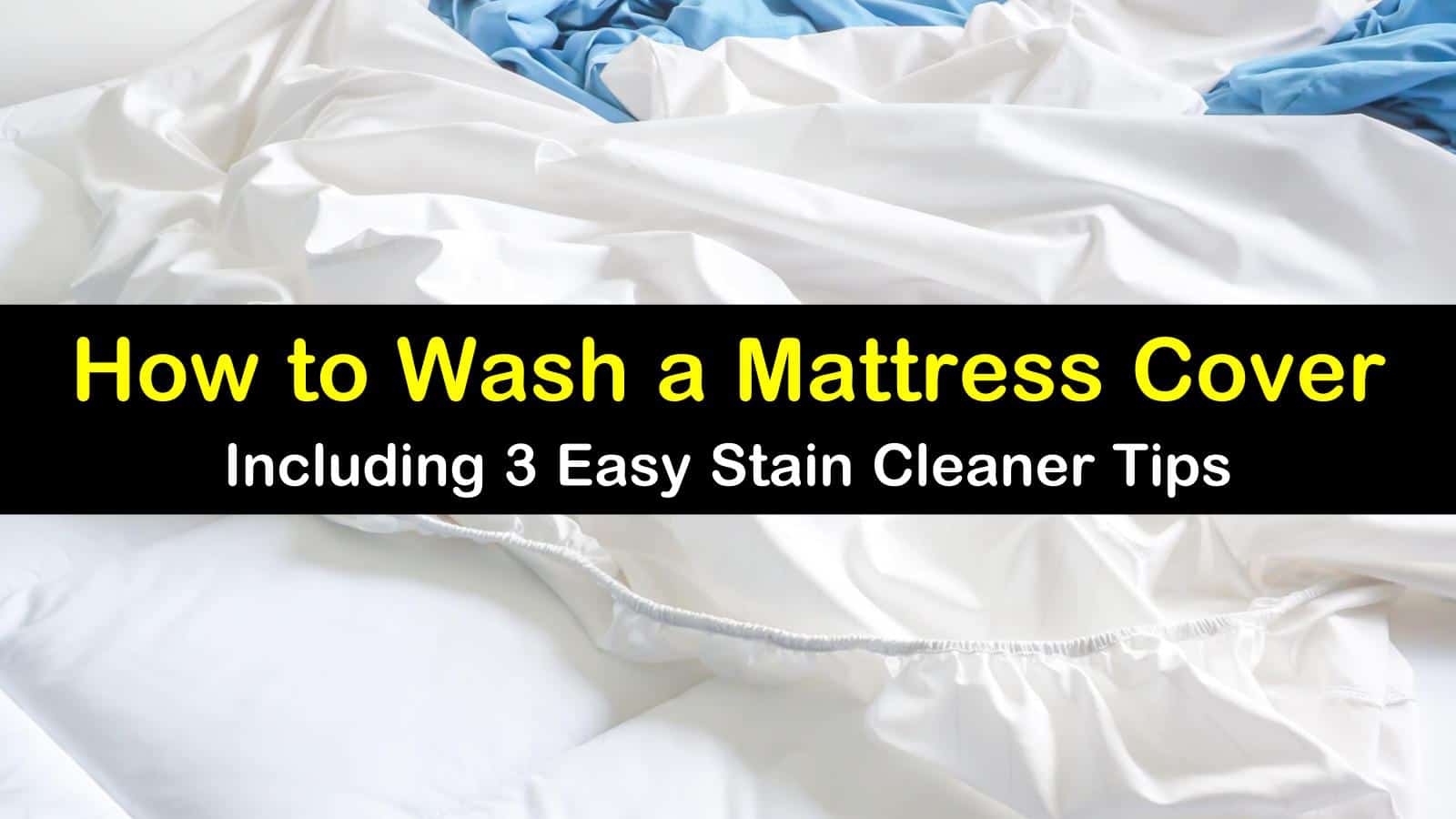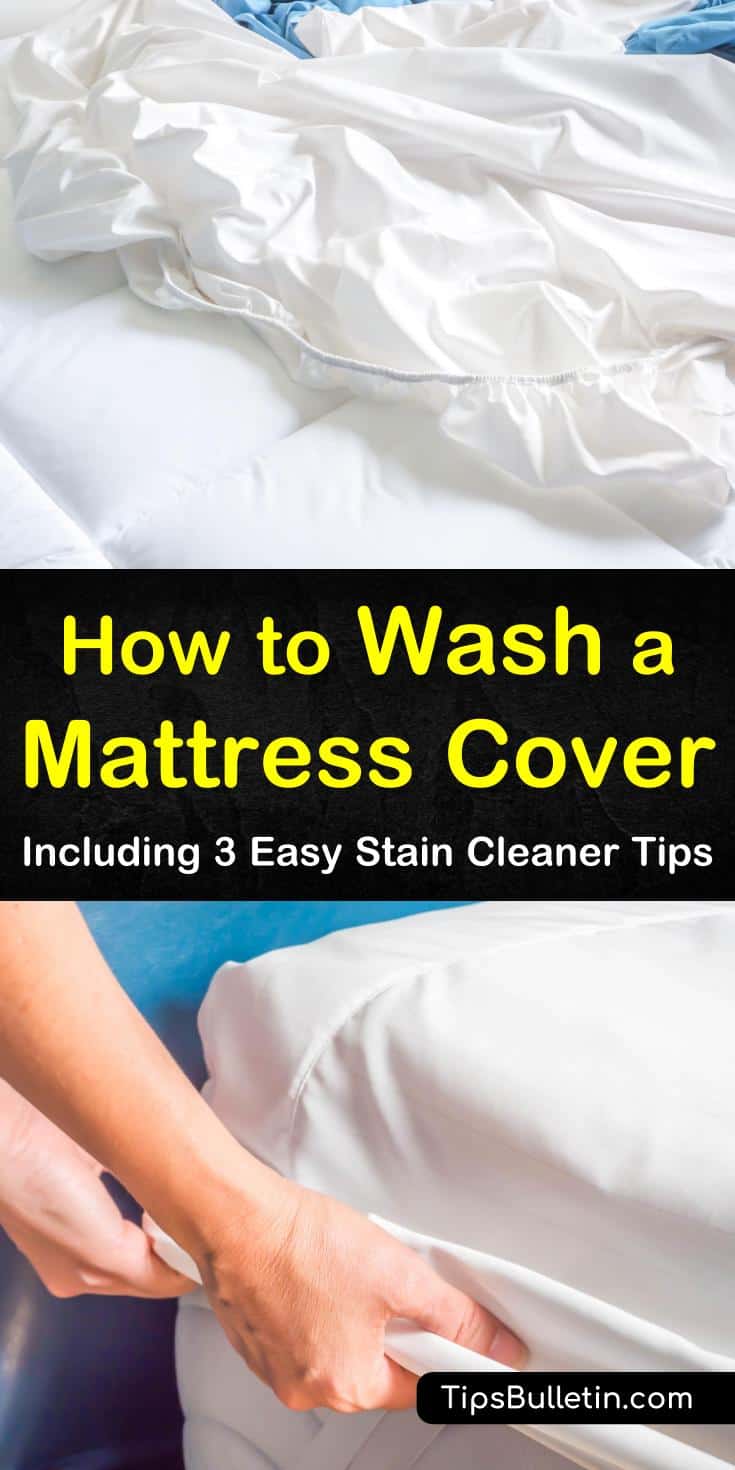How To Spot Clean Mattress Cover
Using a mattress cover is one of the best ways to keep your mattress clean and prevents allergens like dust mites from robbing you of a decent night's sleep. Not only can mattress covers be washed in the washing machine, but they can also prevent stains from marring the surface of your mattress and are easier to spot clean. So what is the best method for how to wash a mattress cover that has stains?
Is this the same method you use when learning how to wash a mattress protector? Your mattress protector, cover, and topper, while all mainly perform the same task of covering the top of your mattress, actually serve different functions.
As a result, these covers are often made of different materials and can be cleaned using different methods. Almost all options allow you to use a washing machine, however. For specific care instructions, follow the guide below and use the three amazing tips for spot cleaning stains.

- Do I need a mattress cover, topper, or protector?
- Tips for Washing Mattress Covers and Protectors without Damaging Them
- How to Wash a Mattress Cover in the Washing Machine
- How to Wash a Mattress Protector with Hydrogen Peroxide
- How to Clean a Mattress Topper with Baking Soda and Vinegar
Do I need a mattress cover, topper, or protector?
Not everyone needs a mattress cover, topper, or protector, but they are convenient. So what is a mattress cover, and how does it differ from a protector or topper? While many often use these interchangeably, the primary purpose of a mattress cover is to keep stains from ruining your mattress.
Protectors work more toward preventing major issues like allergens, dead skin cells, and bed bugs, and toppers focus on comfort.
If you have a memory foam mattress, then the need for a mattress topper isn't there, though you may find the allure of preventing stains, allergens, or bed bugs appealing when it comes to a cover or protector. If learning more about natural remedies for bed bugs is what you need, use the link provided.
Tips for Washing Mattress Covers and Protectors without Damaging Them
Keeping mattress covers and protectors clean is essential for overall health. There are several ways to do it.
tb1234
Keep Your Mattress Cover Clean
- Washing machine
- Hydrogen peroxide
- Vinegar
- Baking soda
tb1234
How to Wash a Mattress Cover in the Washing Machine
The crucial point to remember is that not all mattress covers can be machine-washed. Before you get started, double-check the care label and follow the care instructions for the best mattress cover cleaning method.
In most cases, however, there is little problem with using a washing machine, and you can clean your mattress cover the same way you would clean a fitted sheet. A mild detergent is perfect for spot cleaning before tossing it into the washing machine. When doing this, use a gentle cycle with either cold water or hot water.
The most caution to exercise when learning how to wash a mattress cover comes down to drying it. If you can air dry your mattress cover, this is the best option since high heat can cause significant damage to the cover's protective qualities.
If you must use the dryer, use a tumble dry setting an add white tennis balls to expedite the drying process. This technique may seem a little odd, but a similar method is used for how to wash a pillow.
How to Wash a Mattress Protector with Hydrogen Peroxide
Washing mattress covers and protectors are relatively identical. Mattress protector care instructions typically involve cleaning a mattress pad that provides an added layer of protection from allergens and bed bugs. Similar to covers, these tend to be waterproof and can easily be damaged if not handled properly.
Following the appropriate washing instructions based on the material of the protector is essential, as well as paying attention to the heat setting used while drying. While laundry detergent and a delicate cycle are all you really need when cleaning your mattress protector, you may also need a tougher stain remover.
Using a bleach-free cleaner works best as bleach can strip down the properties of a waterproof mattress pad. Instead, use a cleaner like hydrogen peroxide for a spot clean. What is hydrogen peroxide used for? The question really is what isn't it used for?
Peroxide is a fantastic cleaner, deodorizer, and sanitizer for mattress protectors and a variety of other household surfaces. Dry your mattress protector on a low heat setting in the dryer or let it air dry.
Hydrogen peroxide works very well to clean mattress stains, too. For drying, point a fan at the mattress.
How to Clean a Mattress Topper with Baking Soda and Vinegar
If you have a mattress topper or need to know how to wash a down comforter, they can be a little trickier to clean. Many are bulkier than mattress covers and protectors and don't always fit so well in the washing machine. Often, a washer shouldn't be used at all. Instead, the best process to use is the one similar to when you deep clean a mattress.
Start by vacuuming the mattress topper or comforter using an upholstery attachment to get in between the crevices. Sprinkling some baking soda over the top is a great way to deodorize it and remove mild stains or dirt. This option is especially great for memory foam mattress toppers, too.
Since memory foam is highly absorbent, using an excess of liquids creates a build-up of mildew in the material. Adding baking soda absorbs all moisture, including body oils and sweat, from the mattress topper without adding unnecessary cleaners.
For removing sweat stains from a mattress cover, let the baking soda settle and absorb stains and odor for approximately 25 minutes before using your vacuum cleaner to suck up the remaining powder.
If you must use a stain cleaner, however, a little bit of vinegar in a spray bottle is perfect for a spot clean. For regular mattress toppers or down comforters, lightly spray the area with vinegar and let it soak for ten minutes before blotting with a clean cloth.
For memory foam, spray a washcloth with the vinegar rather than applying the spray directly to the mattress topper. Afterward, rinse with warm water on a damp cloth and thoroughly dry when finished.
Sometimes, if your mattress has stubborn stains, you can apply some baking soda to the spots and rub it in with a cloth dampened with vinegar. This way, you get the extra cleaning power of a baking soda and vinegar cleaning solution that removes virtually all types of stains with just a bit of elbow grease.
If your mattress cover or topper has seen its share of use and you think it's time for a new one, what can you do with the old one? You can recycle mattress and cover. Many community agencies offer recycling services. Check with your waste disposal organization to learn more.
Learning how to wash a mattress protector, topper, and cover is a relatively easy task to accomplish once you have mastered the "don'ts" behind its care instructions. Since most can be cleaned in the washing machine, the critical cleaning lesson comes from understanding the best way to protect the waterproof lining and any memory foam material.

Hopefully, you enjoyed these easy mattress cover cleaning tips. If you liked learning about cleaning mattress covers, remember to share how to wash a mattress cover, protector, and mattress topper with friends and family on Facebook and Pinterest.
How To Spot Clean Mattress Cover
Source: https://www.tipsbulletin.com/how-to-wash-a-mattress-cover/
Posted by: robinsonfidlen1956.blogspot.com

0 Response to "How To Spot Clean Mattress Cover"
Post a Comment